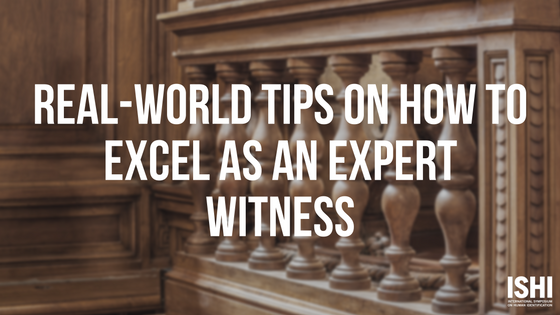In part one of our series on being an expert witness (Demystifying the Thoughts of Juror During Expert Witness Testimony), we examined what jury members were thinking during testimony. This week, we will discuss actionable tips you can use the next time you are called to the witness stand.
Written by: Tara Luther, Promega
Woody Guthrie once said, “Any fool can make something complicated. It takes a genius to make it simple.” Thankfully, you don’t have to be Sir Alec Jeffreys to give expert testimony. Stevee Ashlock, owner of The Trial Experts, has laid out some simple tips that you can follow to set yourself up for success on the witness stand.
Look the Part
As the research done by Schweitzer at al in their May 2016 report titled Communicating Forensic Science shows, juries respond to confidence. Ashlock says that establishing yourself as confident happens before you ever step into the courtroom; first you must look the part. She recommends a well-tailored business suit, pressed shirt, and simple tie for men and professional attire for women with small and simple jewelry.
As much as is possible, it is important to feel comfortable in your clothing. If you’re not used to wearing a suit, wear it a couple of times before your court appearance to become comfortable in it. Fidgeting may undermine your testimony. Similarly to wearing professional attire, walk confidently and with a purposeful stride. When sitting, be sure not to slouch.
We've laid out some tips that you can follow to set yourself up for success on the witness stand. Share on X
Answering Questions on the Witness Stand
Once you’ve been sworn in and seated, be sure that the microphone is positioned comfortably in front of you so that you will not have to lean forward to be heard. When speaking, be sure to speak slowly and clearly and audibly enough that you won’t be asked to repeat yourself. Avoid slang, regional speech, and filler words such as um, ah, and ok. A silent pause in between thoughts will have a larger impact on what you say next.
Small changes you make with your voice can have a large, unconscious impact with the jury. Speaking authoritatively when presenting evidence can be perceived as trustworthiness, while speaking conversationally when explaining details can be perceived as being likeable and friendly.
Another small thing you can do to establish your credibility is to make eye contact with the lawyer while being asked a question and subsequently each juror when giving your answer.
When answering a question, listen fully to what is being asked before responding. After, respond only to what has been asked. Interrupting or answering a question too quickly can come off as rude or give the appearance that you are anxious or over-rehearsed. You do not need to respond right away. Taking a few seconds to gather your thoughts and think about how to respond is just fine. Your answer should have enough information to fully cover the question asked, but keep your reply to the point so that you don’t give opposing council too much to work with. Some questions will require technical answers. It’s important to not use industry jargon whenever possible, and to explain fully when it is necessary.
Presenting Evidence
In comparison to answering questions, presenting your findings may be the easiest part of your testimony. Be sure to proofread your documents and exhibits. Be prepared to answer any questions that could arise. If using audio or visuals, come to the courtroom early to ensure that your electronic devices are working as intended. Technology can be finicky, so be prepared to present your testimony without your audio or visual aids in the case they fail.
If you are using exhibit boards, begin with them facing backwards so that the jury is not distracted and is focusing on what you’re saying. Create interest by talking about the exhibit before you show it.
It is good practice to keep your exhibits simple and to the point. The average juror does not have near the expertise that you have, so keeping your exhibits straightforward will help to avoid confusion and illustrate your point. Each exhibit should tell a clear story, but also require your testimony to interpret them. This can be done by leaving out the nonessential descriptive data which you will fill in verbally. Most people are able to understand what is being presented easier when it is presented in a linear and logical manner.
Be Prepared
As important as it is for you to come off as credible to the jury, the opposition will do their best to discredit you during cross examination. Remember earlier that we said taking a few seconds to gather your thoughts is a good idea to compose your answer. If the opposition is unable to discredit your testimony, don’t be surprised if they try to discredit your character by going after you personally. This can easily knock you off course, so know which answers you give may be challenged and be prepared on how to respond.
Whether you’ve been called to testify once or 100 times, presenting evidence for a jury can be intimidating, but keeping these tips in mind will hopefully make the process a bit easier, and will make you feel more comfortable.
Do you have tips that you can share with other analysts? Leave them in the comments below or join the conversation on our Facebook page.
WOULD YOU LIKE TO SEE MORE ARTICLES LIKE THIS? SUBSCRIBE TO THE ISHI BLOG BELOW!


